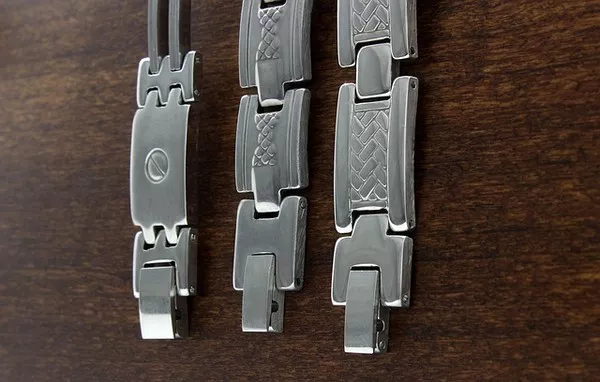Silver, with its timeless allure and multifaceted utility, has been coveted for centuries as a symbol of wealth, elegance, and durability. Whether you’re a seasoned investor, a collector, or simply seeking to adorn yourself or your surroundings with its lustrous charm, navigating the world of silver can be both exhilarating and bewildering. With an array of options available, from bullion coins to antique silverware, it’s crucial to understand the factors that contribute to the quality and value of silver products. In this guide, we delve into the intricacies of selecting the best silver to buy, empowering you to make informed decisions aligned with your preferences and objectives.
Understanding Silver Purity and Composition
Arguably the most fundamental aspect to consider when purchasing silver is its purity. Silver purity is typically denoted in terms of fineness, which represents the proportion of pure silver present in a particular item. The most common purity levels are expressed in parts per thousand or percentages, with 999 indicating the highest purity of silver, often referred to as “fine silver.”
However, achieving absolute purity in silver is rare due to its inherent properties, necessitating the addition of other metals for practical purposes. Sterling silver, for instance, is composed of 92.5% silver and 7.5% alloy, usually copper, to enhance durability and hardness. This alloying process balances the malleability of pure silver while preserving its inherent beauty, making sterling silver a popular choice for jewelry, flatware, and decorative items.
When evaluating silver products, consider the intended use and personal preferences regarding purity levels. Fine silver, prized for its unparalleled purity, is ideal for investment-grade bullion and collectors seeking uncompromising quality. On the other hand, sterling silver offers a harmonious blend of purity and practicality, suitable for both aesthetic and functional purposes.
Exploring Silver Forms: Bullion, Coins, and Collectibles
Silver manifests in various forms, each tailored to distinct preferences, objectives, and budgets. Understanding the differences between these forms is essential for selecting the most suitable option:
Bullion: Silver bullion refers to investment-grade silver bars or rounds typically produced by reputable mints and refineries. These products are valued primarily for their precious metal content rather than numismatic or aesthetic qualities. When purchasing silver bullion, prioritize reputable sources and recognizable brands to ensure authenticity and liquidity in the market.
Coins: Silver coins hold a unique allure, combining intrinsic value with historical significance and aesthetic appeal. Government-issued silver coins, such as the American Silver Eagle, Canadian Silver Maple Leaf, and Austrian Silver Philharmonic, are highly regarded for their standardized purity, weight, and legal tender status. Numismatic coins, on the other hand, derive value from rarity, historical significance, and collector demand, often commanding premiums above their intrinsic silver value.
Collectibles: Antique silverware, commemorative coins, and ornamental silver items fall under the category of silver collectibles, prized for their craftsmanship, historical provenance, and aesthetic appeal. When acquiring silver collectibles, thorough research and authentication are paramount to ensure authenticity and value preservation.
Navigating Silver Markets and Pricing
The silver market, influenced by various factors such as supply and demand dynamics, economic conditions, geopolitical events, and investor sentiment, exhibits volatility and fluctuation in prices. When purchasing silver, whether as an investment or collectible, consider the following principles:
Spot Price vs. Premium: The spot price of silver represents the current market price per troy ounce of pure silver. However, when acquiring physical silver products, additional costs such as fabrication, distribution, and dealer markup contribute to the premium above the spot price. Understanding this distinction enables buyers to assess the true cost and value proposition of silver products.
Market Timing: Timing plays a crucial role in silver investments, as prices can experience significant fluctuations over time. While attempting to predict short-term price movements is speculative, adopting a long-term investment horizon and strategic purchasing approach can mitigate the impact of market volatility.
Dealer Selection: Choosing a reputable and trustworthy dealer is paramount when purchasing silver, especially for online transactions. Researching dealer reviews, certifications, and customer feedback can help ensure a seamless and secure buying experience.
Storage and Security: Proper storage and security measures are essential for safeguarding physical silver investments against theft, damage, or environmental degradation. Consider investing in secure vaults, safes, or custodial services to protect your precious metal assets.
See Also What Is A Good Silver ETF? A Comprehensive Guide
Conclusion
In conclusion, selecting the best silver to buy requires a nuanced understanding of silver purity, forms, markets, and pricing dynamics. Whether acquiring silver for investment, collection, or personal use, conducting thorough research, assessing individual preferences and objectives, and engaging with reputable sources are essential steps towards making informed purchasing decisions. By navigating the intricacies of the silver market with diligence and discernment, investors and enthusiasts can unlock the timeless allure and enduring value of this precious metal.


